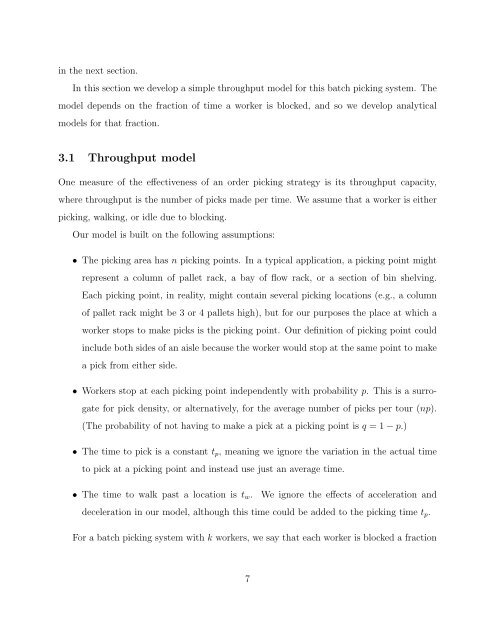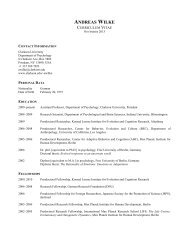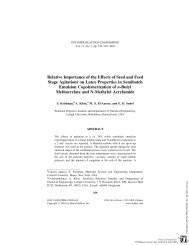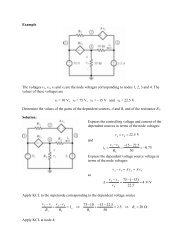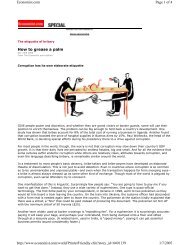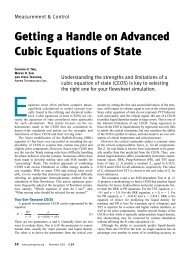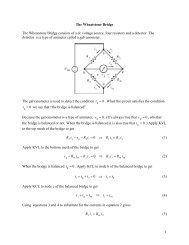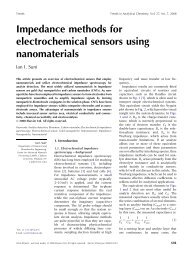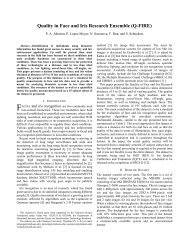The Effects of Pick Density on Order Picking Areas With Narrow Aisles
The Effects of Pick Density on Order Picking Areas With Narrow Aisles
The Effects of Pick Density on Order Picking Areas With Narrow Aisles
You also want an ePaper? Increase the reach of your titles
YUMPU automatically turns print PDFs into web optimized ePapers that Google loves.
in the next secti<strong>on</strong>.<br />
In this secti<strong>on</strong> we develop a simple throughput model for this batch picking system. <str<strong>on</strong>g>The</str<strong>on</strong>g><br />
model depends <strong>on</strong> the fracti<strong>on</strong> <str<strong>on</strong>g>of</str<strong>on</strong>g> time a worker is blocked, and so we develop analytical<br />
models for that fracti<strong>on</strong>.<br />
3.1 Throughput model<br />
One measure <str<strong>on</strong>g>of</str<strong>on</strong>g> the effectiveness <str<strong>on</strong>g>of</str<strong>on</strong>g> an order picking strategy is its throughput capacity,<br />
where throughput is the number <str<strong>on</strong>g>of</str<strong>on</strong>g> picks made per time. We assume that a worker is either<br />
picking, walking, or idle due to blocking.<br />
Our model is built <strong>on</strong> the following assumpti<strong>on</strong>s:<br />
• <str<strong>on</strong>g>The</str<strong>on</strong>g> picking area has n picking points. In a typical applicati<strong>on</strong>, a picking point might<br />
represent a column <str<strong>on</strong>g>of</str<strong>on</strong>g> pallet rack, a bay <str<strong>on</strong>g>of</str<strong>on</strong>g> flow rack, or a secti<strong>on</strong> <str<strong>on</strong>g>of</str<strong>on</strong>g> bin shelving.<br />
Each picking point, in reality, might c<strong>on</strong>tain several picking locati<strong>on</strong>s (e.g., a column<br />
<str<strong>on</strong>g>of</str<strong>on</strong>g> pallet rack might be 3 or 4 pallets high), but for our purposes the place at which a<br />
worker stops to make picks is the picking point. Our definiti<strong>on</strong> <str<strong>on</strong>g>of</str<strong>on</strong>g> picking point could<br />
include both sides <str<strong>on</strong>g>of</str<strong>on</strong>g> an aisle because the worker would stop at the same point to make<br />
a pick from either side.<br />
• Workers stop at each picking point independently with probability p. This is a surrogate<br />
for pick density, or alternatively, for the average number <str<strong>on</strong>g>of</str<strong>on</strong>g> picks per tour (np).<br />
(<str<strong>on</strong>g>The</str<strong>on</strong>g> probability <str<strong>on</strong>g>of</str<strong>on</strong>g> not having to make a pick at a picking point is q = 1 − p.)<br />
• <str<strong>on</strong>g>The</str<strong>on</strong>g> time to pick is a c<strong>on</strong>stant t p , meaning we ignore the variati<strong>on</strong> in the actual time<br />
to pick at a picking point and instead use just an average time.<br />
• <str<strong>on</strong>g>The</str<strong>on</strong>g> time to walk past a locati<strong>on</strong> is t w . We ignore the effects <str<strong>on</strong>g>of</str<strong>on</strong>g> accelerati<strong>on</strong> and<br />
decelerati<strong>on</strong> in our model, although this time could be added to the picking time t p .<br />
For a batch picking system with k workers, we say that each worker is blocked a fracti<strong>on</strong><br />
7


